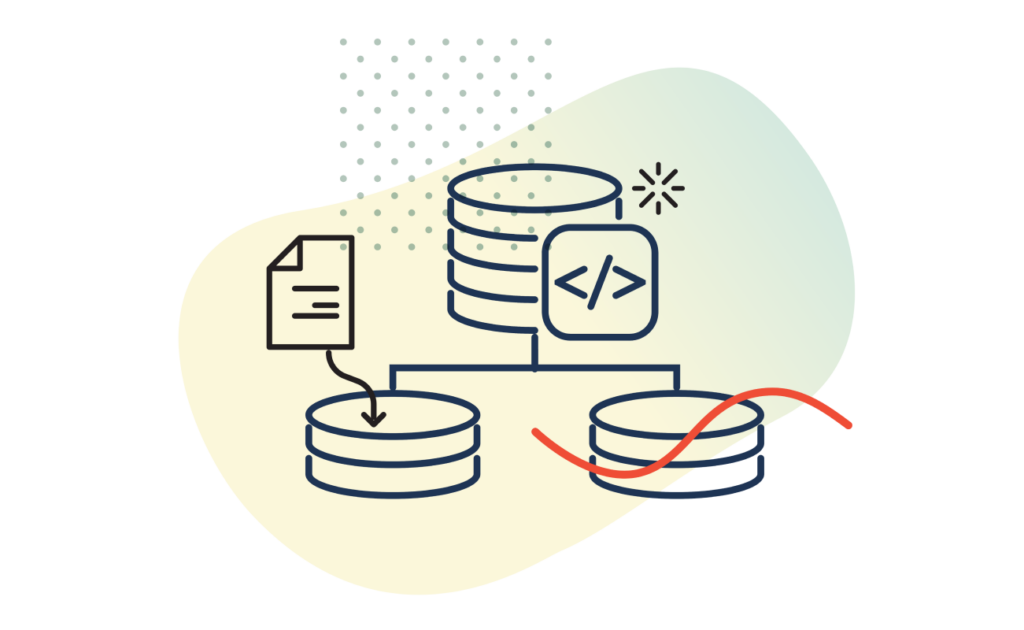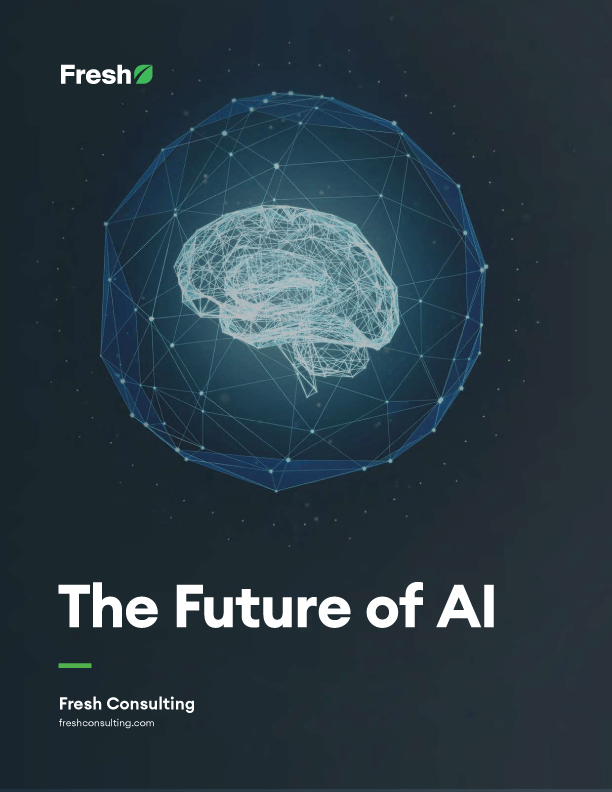Article
Optimizing Business Workflows with Artificial Intelligence Solutions
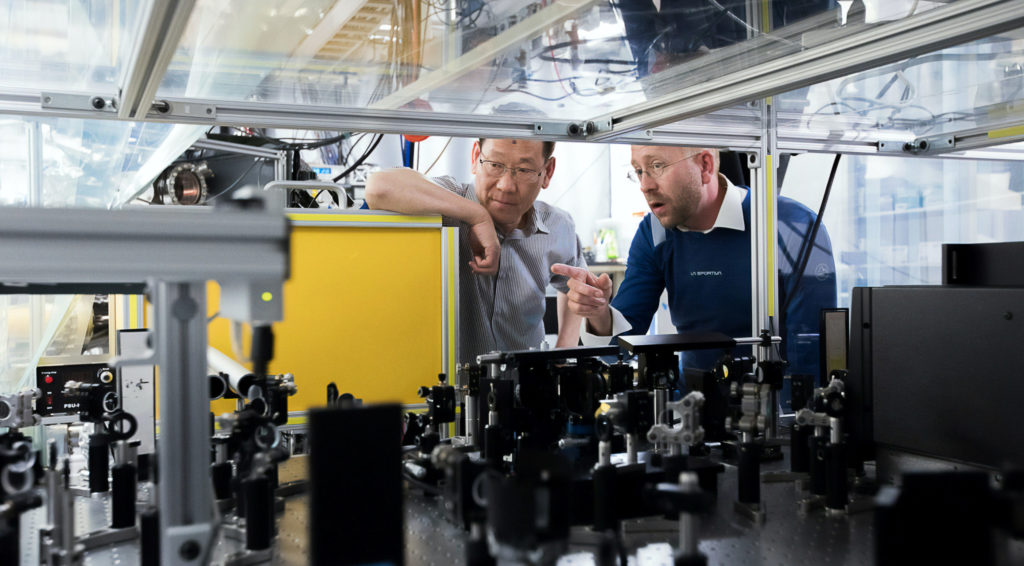
Artificial intelligence solutions for a rapidly changing world
As we discuss artificial intelligence solutions—in the interest of alignment—let’s go with legendary Stanford Professor John McCarthy’s definition:
“The science and engineering of making intelligent machines.”
Across a range of industries and use cases, AI is proving its ROI in the market:
- Predictive analytics: AI offers financial organizations (and others that leverage complex data to make decisions) to automate the process of gathering data and identifying meaningful patterns within it.
- Big data architecture: Logistics operations, equipped with internet of things solutions designed to streamline shipping, can build intelligent workflows where devices talk to each other, pipe data to the cloud, and provide operational insights in real time.
- Computer vision: Self-teaching robots (powered by dynamic perception and navigation machine learning models) can now operate safely and reliably alongside human coworkers in industrial settings. With reusable repositories like perception libraries, the workflow of creating and deploying solutions is faster than ever. Methodologies like MLOps (machine learning operations) have the potential to further increase the standardization, speed, and accuracy of this cutting-edge work.
These are only three of dozens of practical applications of artificial intelligence solutions (and the related field of machine learning), but they illustrate a common thread:
By using AI and machine learning to equip machines with intelligence mirroring our own, organizations can automate a wide variety of tasks. As the intelligence of machines becomes more sophisticated, increasingly complex applications of AI will be possible.
At Fresh, we believe that automation at scale (enabled by AI) will empower humans to do more meaningful and impactful work. Fundamental changes to the way we do work are on the horizon regardless of whether we’re ready for them, but ethical, meaningful, and intentional AI design will define which organizations succeed in our rapidly changing world.
In this post, we’ll dive into:
- The importance of “AI design,” in addition to “AI development”
- Practical business cases for AI that companies are investing in right now
- Examples of the work we’ve done at Fresh, which showcase the value of AI for our clients and partners.
Let’s get started!
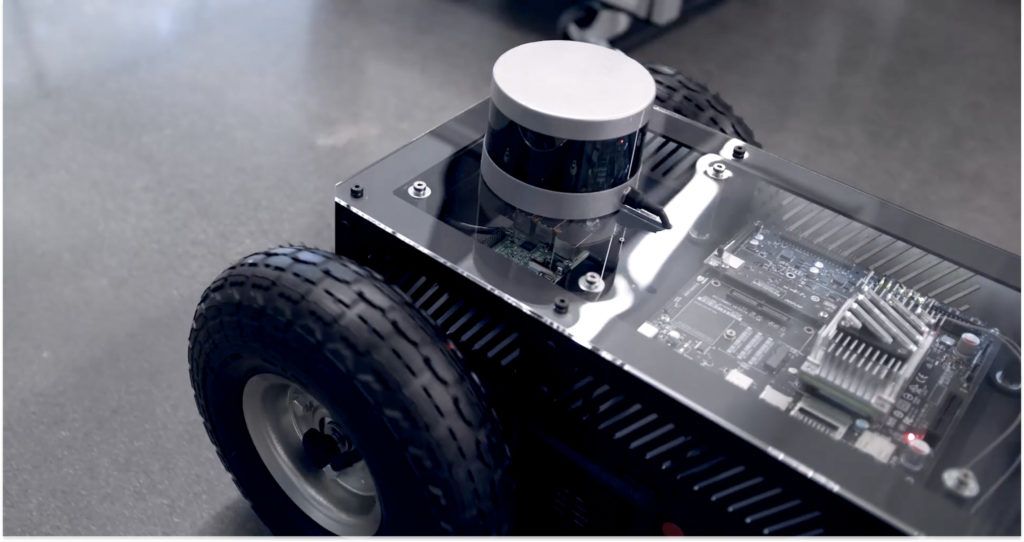
What are the specifics of AI design and development?
AI and ML involve much more than coding, which is why we mention “design” here as well.
Regarding AI design, consider the customization involved in developing AI solutions for different industries.
AI Design in Healthcare
- What’s on the horizon? Advances in AI have huge implications for areas like radiology, image-based diagnostics, and data telemetry (remote measurement and monitoring), among many others. The past state of the healthcare field involved manual image reading and manual data handling. The future of healthcare promises to be drastically different. Advances in AI, designed for this specific use case, have significant implications for traditional workflows.
- How will AI change the industry? AI won’t cut practitioners out of the work––far from it. Technology maturation will lead to additional breakthroughs with things like computer vision (CV) and real-time data, automating and speeding up workflows and allowing healthcare workers to be more effective and patient-focused.
- What’s the business value? Saving time and doing more accurate work can mean the difference between life and death for a patient on the operating table and improved standards of care.
- Additional considerations: AI and ML will continue to impact the medical device engineering. When choosing a software partner for your medical device development project, consider one who understands how AI and ML might factor in. Although medical device development involves more than software, ensure that your processes are optimized for developing with emerging technologies, as appropriate.
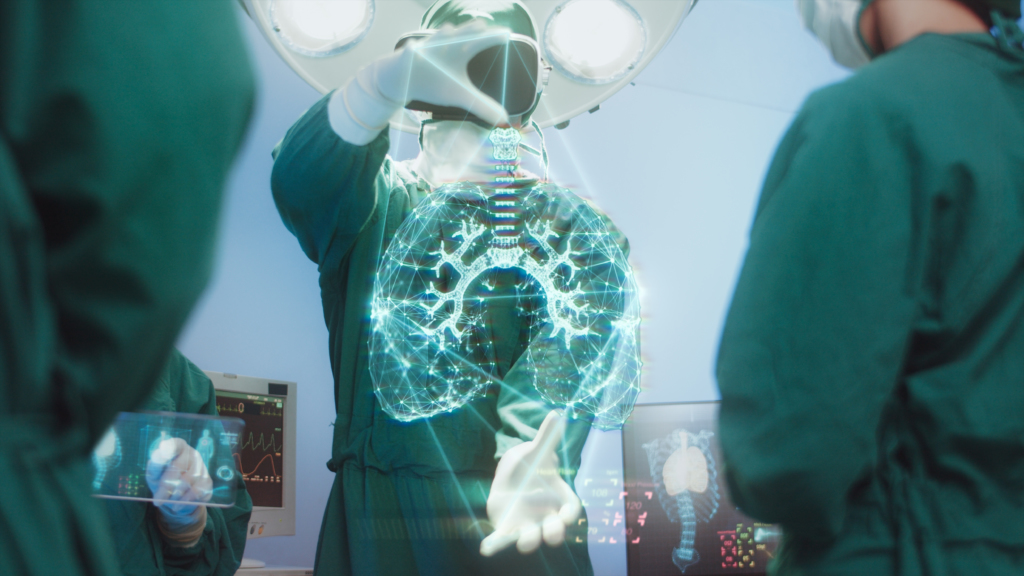
AI Design in Construction
- What’s on the horizon? Construction sites are busy place. A tight labor market, myriad safety hazards, and a lack of real-time insights into projects all create additional roadblocks to doing efficient work. AI has the potential to alleviate operational friction and enable construction workers and managers to offload certain tasks to machines.
- How will AI change the industry? Emerging uses of AI and automation have shifted the approach of transporting materials on a construction site, managing machines, and streamlining construction operations. We’re just at the tip of the iceberg.
- What’s the business value? AI-based scheduling software solutions, AI-enhanced autonomous drones for monitoring construction, and autonomous robots for smaller construction tasks will continue to expedite workflows and keep projects on track. Decreasing the possibility of human error in construction has massive financial and logistical implications.
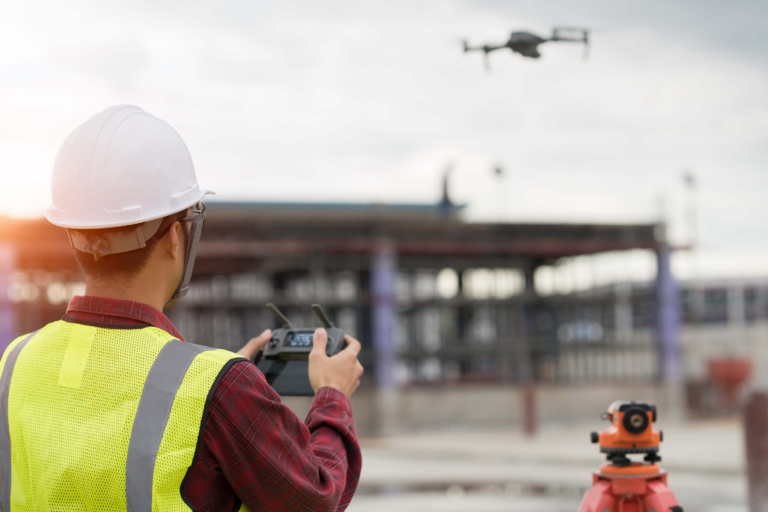
AI Design in Agriculture
- What’s on the horizon? Historical agricultural work has been mostly dependent on human resources and manual, time-consuming processes. Farmers and laborers will always play a role in cultivating land and feeding the world, but the current approach to agricultural work creates scalability issues for small farms and AgriTech corporations, in addition to numerous other inefficiencies.
- How will AI change the industry? There’s currently groundbreaking research in progress and beta deployments for small-scale AI solutions in some parts of the agricultural industry. This work is well underway, from creating business intelligence software to streamlining farm logistics and deploying machines that analyze soil and give farmers recommendations for ideal planting.
- What’s the business value? In the near future, we’ll see market-ready solutions for large-scale automated farming, increasingly sophisticated software for onboarding, training, and farm communications, autonomous crop monitoring and livestock maintenance, and predictive models to promote crop health and mitigate disease.
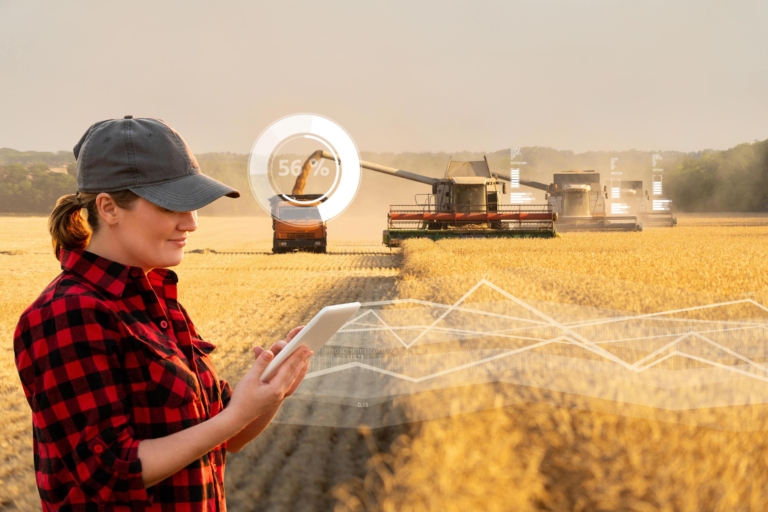
These three examples illustrate why “AI design” matters:
- No matter how intelligent the AI solution or machine learning model is, if it’s not tailored for the use case in question, it can create more work or yield data a company isn’t ready to act on. AI solutions in healthcare and AI solutions in agriculture warrant a customized approach.
- Despite the foundational work being done by organizations like OpenAI to create impactful standards for AI development, off the shelf solutions don’t always work. Some models for more straightforward tasks (business intelligence, document recognition, etc.) are transferable across uses cases. But creating algorithms for more complex tasks, like determining ideal crop cycles with AI or developing an ML model for construction drones to adapt and improve, necessitates specialization.
- Human-centered design is essential when it comes to AI. Although AI refers to the intelligence of machines, ultimately our efforts in the field are about human empowerment: better-equipped doctors, construction workers with more advanced tools, and farmers with the ability to deploy their workforce strategically and increase their yield. AI is about augmentation, and thus, human-centered design principles are essential to consider.
At Fresh, we recognize that software is never a one-size-fits-all solution. This notion applies to AI as well, and that’s precisely why we’ve developed an interdisciplinary, cross-functional approach to serving our clients and partners.
Our strategists, designers, developers, and engineers work together to create customized, end-to-end AI solutions tailored to an organization’s specific needs, considering unique factors and requirements at every step of the engagement.

Additional artificial intelligence solutions use cases
AI products have begun maturing beyond the startup phase. As the field transitions out of the realm of science fiction and into reality (as seen recently with the proliferation of generative AI), solutions are becoming more affordable and realistic. Businesses worldwide have taken notice, automating their operations and enhancing organizational “intelligence” even if their AI/ML solution isn’t particularly grandiose or groundbreaking.
Bottom line, AI makes sense from a practical standpoint. With it, teams are better equipped to solve everyday challenges.
Let’s discuss some of the clear cut use cases applicable to organizations of any size.

Natural language processing & voice recognition
Natural language processing (NLP) and voice AI are AI technologies that convert different types of linguistic data (spoken and written) into usable forms. Prominent examples of voice assistants are Siri from Apple and Alexa from Amazon, both of which use the principles of NLP to parse the data they gather and help product users complete a variety of tasks. Other exciting examples of NLP-related solutions include DALL-E and Midjourney, AI systems that create artworks from user descriptions written in natural language.
Because human language is so complex, creating advanced neural networks (“series of algorithms that endeavor to recognize underlying relationships in sets of data through a process that mimics the way the human brain operates”) and deep learning models (“a type of machine learning and artificial intelligence that imitates the way humans gain certain types of knowledge”) is essential. Machines that teach themselves will be essential for increased accuracy and sophistication of language-based tasks. Self-teaching also has implications for the evolution of AI art platforms and the output of other machine-generated creative material.
Businesses are already using natural language processing algorithms to analyze call data, create transcripts, analyze customer sentiment, and communicate inclusively with a wider, more diverse audience. As the algorithms and teaching models improve, so too will accuracy and adoption.
DALL-E and Midjourney are exciting, high-profile examples of NLP-like work. But what’s most exciting for everyday businesses is that they showcase the language-based possibilities that AI provides.
Robotic Process Automation (RPA)
Robotic process automation, or RPA, refers to high-quality “software robots” that automate various software-based tasks. At an even simpler level, to quote Fresh’s Mikey Weller, “software robots are backend services that automate elements of a process or workflow, often in real-time.”
The process is similar (hence the name) to how traditional robots automate labor-intensive activities like building a car, lifting a heavy object, or cleaning hazardous waste, but RPA solutions are deployed on enterprise systems, mobile apps, or e-commerce websites. As opposed to doing heavy lifting in an industrial warehouse, RPA software robots do heavy lifting within the apps people use everyday, improving usability and automating certain elements of the experience.
In the case of business-focused RPA solutions, software robots enable human workforces to focus on more strategic, high-value tasks instead of doing the tedious “heavy lifting” required in traditionally manual workflows. AI is already integral for many RPA solutions, but to take on more complex tasks, software robots will need more sophisticated intelligence.
Clear-cut examples of RPA include:
- Finance and accounting: Software robots can complete compliance reporting, credit card application processing, and payroll.
- E-commerce order management and processing: Software robots can automate payment collection and processing, and reduce human error in customer service.
- Healthcare scheduling and hospital operations: Software robots can order drugs and maintain stock, ensure regulatory compliance, and schedule patient appointments.
- Insurance claim management: Software robots can detect irregularities during processing, transfer data between systems, ensure regulatory compliance, and automate emails.
Regarding the end value to businesses, RPA solutions decrease the need for a dedicated team assigned to complete repetitive tasks. In line with what we’ve said about creating human-centered AI solutions, RPA also carries value for individual workers––the people who make up the DNA of an organization. With RPA, the team that completed those previously manual tasks can repositioned for higher value, more fulfilling work work; delivering excellent customer service, as opposed to payment collection and processing, or doing strategic, interdepartmental work instead of stocking drugs in a hospital pharmacy.
Organizations like IBM, Microsoft, and many others provide AI software solutions that are a fantastic starting point. But integrating these systems requires customized consultation, an area where the Fresh team excels.
Artificial intelligence solutions for biometrics & intelligent document recognition
The core mechanism of ML is to classify input: recognition, perception, categorization. Clear-cut examples are CV (computer vision) and robot perception, as Steve Yin discusses in “Building a Robust Perception Library for Robots.” But these principles and methods extend beyond robotics to many other industries and business use cases.
Creative ideation in the field of AI recognition is exciting, from Netflix’s machine learning models that “learn how to entertain the world” to Apple’s Face ID that creates a hands-free approach to payments, access, and much more. Similar to Apple’s efforts in biometric recognition, the Fresh team has done work for NEC and on Telemus (an internal labs project) to create frictionless experiences in airports and offices.
Though not necessarily as high-profile or eye-catching as the examples above, artificial intelligence solutions like document recognition leverage some of the same design principles and design work. These solutions use AI and machine learning to streamline operations for organizations that deal in paperwork, scraping documents (templates with handwritten signatures, legal documentation, etc.) for crucial information, then processing the data automatically. Intelligent document recognition is instrumental for organizations in the financial and real estate industries, for example, where banks regularly handle massive amounts of documentation and excessive form completion.
Leading with a human-first design thinking approach allows organizations to automate tedious tasks that carry value for the professional workforce while also saving time and money. Ethical considerations and data protection are also essential to address in these use cases.
Business intelligence (BI)
Your employees are the experts in your field. Equipped with the right tools––tools that serve up actionable insights based on vast stores of data––they can make decisions that have lasting impact.
Organizations across a wide-spectrum of industries rely on business intelligence to make time-sensitive decisions. Business intelligence is evolving rapidly thanks to AI and machine learning, which provide cutting-edge capabilities around data preparation, data mining, information management, and dashboard visualization. Raw data still inform the decision-making process, but with BI, the data is presented in a more usable form and collected automatically.
The predictive capabilities of artificial intelligence solutions help businesses and executives stay ahead of the competition. BI platforms analyze market trends and performance metrics and extract valuable data sets in real time. With strategic focus and great design, customized AI products can be tailored to niche business cases as well.
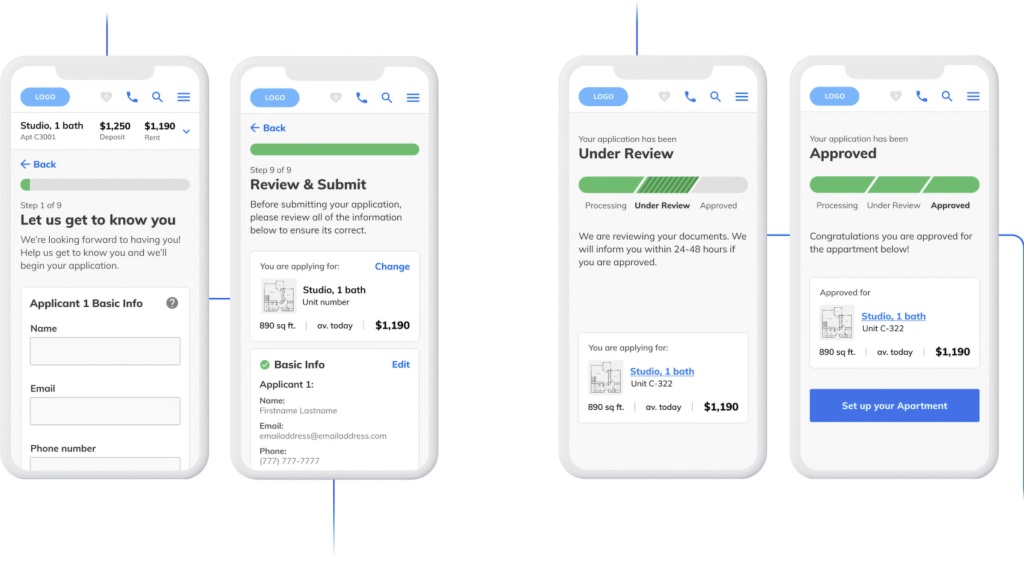
Security & management of sensitive data
Many of the above examples cover how artificial intelligence solutions impact user experience, customer experience, or employee experience, making work less tedious and making processes less convoluted. But RPA and other solutions are also useful when addressing data protection, which is essential for organizations required to adhere to growing list of security standards:
- ISO 27001: “an international standard for information security that provides a framework for managing sensitive company information.”
- PCI DSS: “the Payment Card Industry Data Security Standard governs the way credit and debit card information is handled.”
- HIPAA: “applies to electronic protected health information (ePHI), which is PHI transmitted by, or maintained in, electronic media.”
- GDPR: “a framework of security requirements that global organizations must implement to protect the security and privacy of EU citizens’ personal information.”
- FISMA: “a framework that aims at protection US federal government information and IT systems agencies Cyber threats. It covers not only the federal agencies but also their suppliers and related third parties.”
AI-related tools and backend services are not a replacement for strategic planning on the part of organizations. However, these tools can streamline elements of standard adherence. Additionally, regarding something like database security, ML models can be programmed to improve in their ability to recognize threats as more data is gathered, heading off cybersecurity issues before they’re identified internally.
For use cases like anomaly identification and error detection, AI designs can equip IT security teams to act faster. Advanced algorithms act as a force multiplier for any cyber security team or data-sensitive organization.
Examples of our work integrating artificial intelligence solutions
Various AI design tools and integrations are beginning to change the way businesses do business. They’re also increasing the rate at which organizations can create intelligent, high-quality products. With knowledge about what tools to use and what processes to follow, we’ve done significant work at Fresh to design systems for our clients and partners. The case studies below represent some of our most impactful output:
Robotic Air Hockey: Microsoft AI partnered with us to develop a promotional hardware piece for the Autonomous Systems group. They needed a bold platform to deploy, test, and interact with artificial intelligence models created with Project Bonsai. Together we created a first-of-its-kind robotic air hockey table that gamifies interaction with intelligent control systems. Our team of designers, developers, and engineers worked holistically to deliver Microsoft a prototype that materializes traditionally simulated AI development efforts into tangible experiences accessible to anyone.
Harmony: An Integration Platform as a Service (Ipaas), Harmony is an artificial intelligence solution—enabled command center for robot workforce management and coordination, navigation action and control, telemetry and data intelligence of robot behavior, service support design, and architectural schema for sending robots “home” to recharge for the next mission. From the strategic planning for team management and system scalability to the actual engineering and development work, Fresh handled every aspect of the solution.
Project Moab: Microsoft’s Project Bonsai solution enables engineers without a background in data science to apply their subject matter expertise and accelerate the development of intelligent control systems. We partnered with Microsoft to create the Red Dot award-winning Moab, a ball-balancing robot operated using motion control, visualized in simulation on Microsoft Project Bonsai, coordinated using trained Project Bonsai brains, and then deployed to the physical bot. Our team built Project Moab to complete the initial objective of balancing a ball via machine learning. Creating a robot powered by Bonsai required a solution incorporating computer vision, artificial intelligence, and hardware, requiring a cross-disciplinary collaboration between Fresh and Microsoft.
Start your AI design & development journey with Fresh
Artificial intelligence and machine learning are making a massive impact for businesses across the spectrum. If you need a team of experts who understand how to build practice artificial intelligence solutions and tap into the value of emerging technology for your business, let’s connect!



